On February 19, 2023, the Palm Beach County Chapter of the Florida Native Plant Society sponsored a field trip to the Arthur R. Marshall Loxahatchee National Wildlife Refuge. We went on the 0.4 mile (0.64 kilometer) boardwalk trail that took us through an 80-year-old second growth cypress swamp and, after the boardwalk trail, we spent a bit of time at the Refuge's pollinator garden outside the visitor center. Here are a few photographs taken during the field trip.
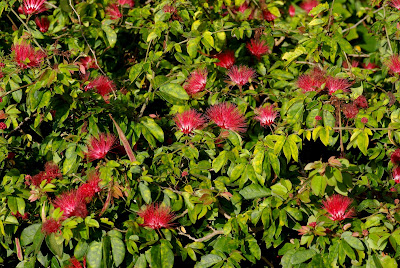 |
| I went to the Refuge with fellow native plant enthusiast, Julia Renninger. In her mostly native garden were a few non-natives, including this Calliandra emarginata 'Nana'. It is sometimes a component of wildlife gardens in Florida for its flowers, which attract bees and hummingbirds. The yellow mottled foliage is fairly common in specimens cultivated in south Florida, but I am not certain if it is indicative of a mineral deficiency or a virus. |
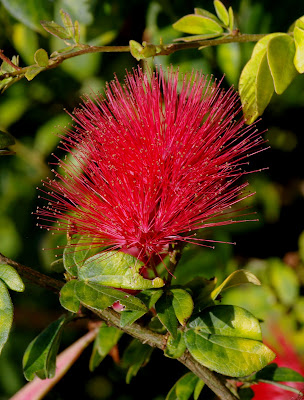 |
| A close-up of the flowers of Calliandra emarginata 'Nana'. |
 |
| A close-up of the flowers of Arachnothryx leucophylla (common name Panama-rose), another non-ntive plant sometimes cultivated in native plant gardens in the warmer parts of Florida, presumably for hummingbirds. |
 |
| Acer rubrum (Red Maple) was putting out a flush of fresh, new spring growth in the cypress swamp. |
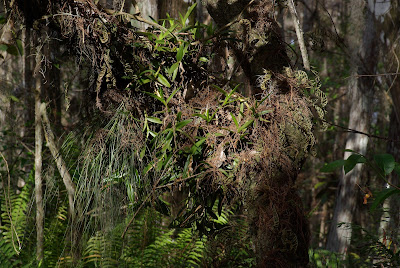 |
| As to be expected, epiphytes were everywhere and we stumbled across this fortuitous assemblage of three native epiphytes: Epidendrum rigidum (rigid epidendrum), Pleopeltis michauxiana (resurrection fern), and Tillandsia setacea (southern needle-leaf airplant). All three were readily seen from the boardwalk, with the fern and airplant being frequent and the orchid common. |
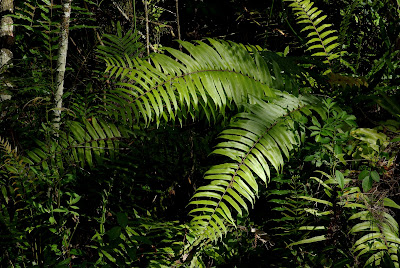 |
| Plants of Nephrolepis biserrata (giant swoard fern) were spectacular at the Refuge, where they were growing under ideal conditions of moisture and partial shade. Macho fern, which is rather popular as a large landscape fern in south Florida, is a cultivar of this species (Nephrolepis biserrata 'Macho'). |
 |
| As was to be expected, Saururus cernnus (lizard's tail) was frequent and abundant in the Refuge's cypress swamp. |
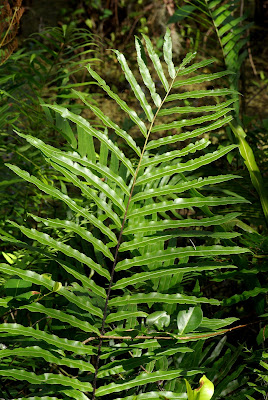 |
| Telmatoblechnum serrulatum (swamp fern) was also frequent along the boardwalk trail and, under ideal conditions of moisture and light, were among the largest and most robust representatives of this species that I'd ever seen. |
 |
| There were many birds present along the boardwalk on the February morning that we visited the Refuge and one birder in our group recorded about two dozen species. Other than the birds and a swarm of termites, there were few signs of wildlife although this cypress trunk (Taxodium species) was clear evidence that a bobcat (or bobcats) were using it as a favored scratching post. |
We saw many, many more plants in addition to the ones listed above; however, I was unable to take good photographic images of them. Of special interest were Acrostichum danaeifolium (giant leather fern), which is the largest native fern in Florida, as well as a second orchid, Iopnopsis utricularioides (delicate violet orchid), the latter in full bloom.








